#gnostic gems
Text
Abraxas

“The bird fights its way out of the egg. The egg is the world. Who would be born must first destroy a world. The bird flies to God. That God’s name is Abraxas.”
— Hermann Hesse
#Abraxas#Hermann Hesse#Hesse#gnosticism#gnosis#world egg#jung#Abrasax#esotericism#western esotericism#occult#occultism#demian#gnostic gems#mysticism
293 notes
·
View notes
Photo

The Books of Jeu are two Gnostic texts. Though independent works, both the First Book of Jeu and the Second Book of Jeu appear, in Sahidic Coptic, in the Bruce Codex.[1] They are a combination of a gospel and an esotericrevelation; the work professes to record conversations Jesus had with both the male apostles and his female disciples, and the secret knowledge (gnosis) revealed in these conversations.
#Books of Jeu#gnostic gems#gnosticism#gnostics#Gnostic#knights templar#Templar collegia#fav#print this off later
99 notes
·
View notes
Text
youtube
A brief history of gemstone amulets, from the V&A.
#V&A#v&a museum#gemstones#gems#minerals#archaeology#mineralogy#Youtube#history#art#jewelry#reliquary#religion#symbolism#gnosticism#abraxas#bloodstone#jade#qilin#kirin#turqouise#amulet
1 note
·
View note
Text
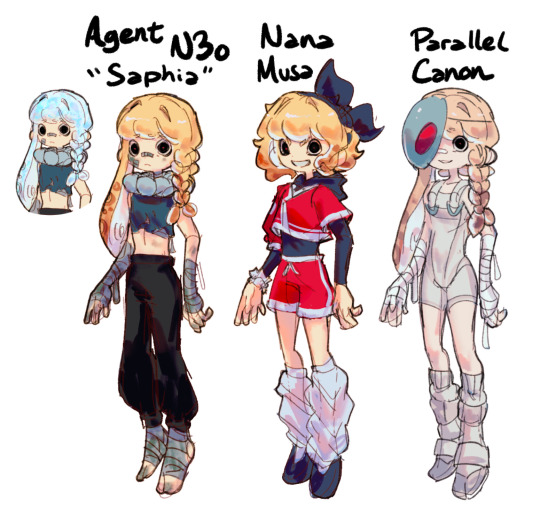
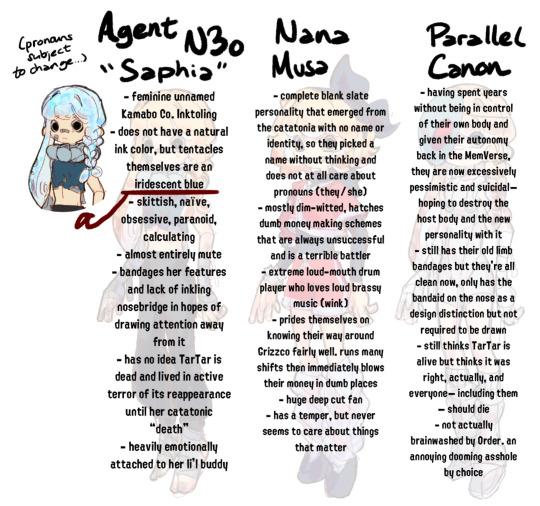
MY BEAUTIFUL PRINCESS WITH A DISORDER design masterpost! i won’t be sharing their full story here just because it’s super convoluted and i’ve only really been telling it by word of mouth. a few fun things i wanted to note on and clarify because i’m a linguistics nerd:
- the name she chose for herself, saphia, is technically a pun on 3 things. sophia, the feminine greek name from christian gnosticism that means wisdom to allude both to her lack of wisdom in her naïveté and her excess of traumatic knowledge, the sapphirina copepod (which i based the tentacles off of) which is a kind of parasitic arthropod (rubs my hands together evilly), and sapphire, the gem. despite growing attached to it, she never gets to use this name. i picked a name of a greek origin because the prefix neo (as in neo agent 3) is also hellenic 🫶
- nana named themselves after a banana. i named them after the nanacara anomala, the goldeneye cichlid, and musa, the genus that bananas fall into.
i use nana to refer nana as they are currently. saph will be used interchangeably with neo to refer to them With That Other Hairstyle in general depending on context (neo as a title, saph as a name)
ramble about pronouns under the cut because. geez
ok pronouns are subject to change actually because i’ve been wracking my brain over this for the past day. were they made intentionally to be a female inktoling? would tartar have tried to model its batch of inktolings after the male and female inkfish in society? would they have been born genderless? i feel like they would want to trend towards being female with the name they picked and the fact that they idolized female inklings. but ALSO if anything nana would use she/her. BUT i’ve gotten VERY used to using they/them for them and as they stand they already use she/they. i feel like nana being they/them nonbinary makes just as much sense because they’re a blank slate.
if anything i might just give up and make them use they/them the full way through, but my reasoning generally was that she was modeled to be feminine and idolized female inklings and wanted to be like them -> does not give a flying fuck about pronouns but presents pretty femininely so rolls with the two pronoun sets they get called the most -> was so disillusioned by the trauma of finding out they Live In A Society of which they no longer wish to participate in so they’ve completely abandoned the notion of gender. gender just becomes an afterthought. which i think is pretty funny.
i love dumping a bunch of complicated lore on my character that only i can understand. i am excited to solidify their story (and their pronouns. god) soon 🫶🫶🫶🫶🫶
#saphiwa#<- new tag for my komaeda baby#babana#tiz art#splatoon 3#splatoon fanart#splatoon#inktoling#side order spoilers#side order
125 notes
·
View notes
Text
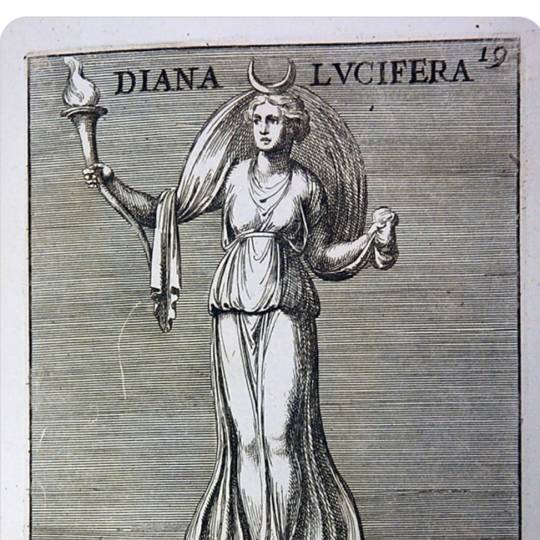
✨️Mari Lucifer✨️
In his book 'The Gnostics and Their Remains', Charles King equates the Gnostic Sophia with Venus Anadyomene (Venus Rising from the Sea) which appears on ancient magical gem stones as a naked damsel.
Manly Hall explains that Venus and Isis were names for Lucifer, telling us: "Being visible in the sky at sunset it was called Vesper, and as it rose before the Sun, it was called the Star of the Morning or Lucifer, meaning Light Bearer. Because of this relation to the Sun, the planet was also called Venus, Astarte, Aphrodite, Isis, and The Mother of the Gods".(The Secret Teachings of All Ages').
Magdalene is assumed by some to be interchangable with goddesses like Sophia, Isis, and Inanna. In his book 'Mary Magdalene The Illuminator', popular author William Henry tells us: 'Plutarch states that Isis was called Sophia.
She's also called Astarte, the goddess worshipped by Solomon. Each of these goddesses, in turn is the Babylonian goddess Inanna. Schonfield concludes that there is no doubt that the beautiful woman's head of the Templars represents Sophia in her female and Isis aspect -- and she was linked with Mary Magdalene in the Christian interpretation"..
The most famous occultist of the 20th - century Manly Hall, explains in his book 'The Secret Teachings of All Ages' that Isis "metamorphized' into the Virgin Mary.
Some scholars have tied the Virgin Mary to Magdalene. Theologian Cyril of Jerusalem held that the Virgin Mary was one and the same as Magdalene. In their book 'Jesus and
the Lost Goddess', Timothy Freke and Peter Gandy assert that the Virgin Mary and Magdalene in the Gospel accounts represent -- respectively, the higher Sophia and the fallen Sophia - aspects of the same character in the Sophianic myth.
Like Sophia, Magdalene was also associated with Venus. Rachel Geschwind (a professor in the Art History department at Youngstown State University) observes that in the 16th - century, paintings like Rossiglio's 'Conversion of the Magdalene' began to give Venus-like characteristics to Magdalene.
The explicit links between Magdalene and Venus perhaps point to Mary's true identity. When observed From Earth, Venus traces a perfect pentagram across the sky every eight years making a pattern of a rose.
This is known as the "Rose of Venus" or The "Pentagram of Venus". Magdalene is sometimes referred to as "The Rose" and those who diligently followed the Magdalene Mysteries were known as the "Initiates of the Rose Line".
In Southern France, Magdalene was known as Mary-Lucifera, connecting her to Lucifer. Isis and Diana were also known as Lucifera (see the book Magdalene Mysteries', by Seren Bertrand). As Author DeAnna Emerson tells us: "Inanna's name was altered to suit new languages. She was called Ishtar, Isis, Astarte, Diana, Venus, Magdalene -- one goddess with many names"
In his book The Templar Revelation', popular author Clive Prince tells us:
"As Nancy Qualls-Corbett and other recent commentators have pointed out, the depiction of Mary Magdalene in the Gnostic Gospels is that of illuminatrix and illuminator or Mary Lucifer, the Light-bringer -- the bestower of wisdom and enlightenment".
#mysticism#occultism#esoteric#venus#divine feminine#lux#aphrodite#lucifer#morningstar#mary#know thyself#knowledge#sophia#initiation#inanna
38 notes
·
View notes
Text

The Winged Globe - Hadit
HADITH PRAYER
Be you, Oh Hadit! my secret, the gnostic mystery of my Being, the focal point of my connection, my heart, and it blooms on my verb fertile lips.
Up there, in the infinite skies, at the deep height of the unknown, the ceaseless glow of light, is the naked beauty of Nuit, she bows and bends in delightful ecstasy, to receive the secret oscillation of Hadit. The winged sphere and the blue of the sky are mine
O... IN THE KAKOF NA-KHONSA
O... IN THE KAKOF NA-KHONSA
O... IN THE KAKOF NA-KHONSA
Above, the gemmed azure is
The naked splendour of Nuit;
She bends in ecstasy to kiss
The secret ardours of Hadit.
The winged globe, the starry blue,
Are mine, O Ankh-af-na-khonsu!
Winged Globe - Hadit by Mahaboka
10 notes
·
View notes
Text
Christological Heresies as Steven Universe characters:
For @provider-of-guardians and @mhmm-thatsinteresting, because this is a very niche crossover that only you two would care about.
Gnosticism: Holo-Pearl
Arianism: Connie
Apollinarianism: Frybo puppeteered by gem shards
Nestorianism: White Diamond (the Son) mind-controlling Pink Pearl (Jesus)
Monophysitism: Steg
#christianity#christian memes#steven universe#holo-pearl#connie maheswaran#frybo#su white diamond#su pink pearl#su volleyball#steg#ellie's text-to-text
7 notes
·
View notes
Text
Magical Gemstones: An Abridged Guide
Magical gemstones are a type of talisman made of semiprecious stones —such as hematite, carnelian or amethyst— that were worn set in rings or as pendants and their size ranges from 1.5 cm to 3 cm.These gemstones haven't magical, protective characteristics because of the nature of the gem itself but because the representations of Gods and holy names carved conceded them virtues through holy dynamis: This is, among other things, the inherent power of divine names and/or their representations.
These depictions are normally inverted (negative) This, together with the fact that some of the gems show a certain degree of worn indicates that they were manipulated in some way—probably rubbed or even licked, in order to increase their efficacy—proves that they were not conceived as seals but as amulets or talismans.
A magical gemstone, to be considered as such, should have one or more of the following elements:
An iconographic language generally belonging to syncretic Gods or that combines Gods from different origins.
Charakteres (magical signs. They can be planetary, protective, etc.)
Voces magicae (Words of power and phrases whose formulation and structure may hide secret, sacred names of Gods as well as prayers or incantations dedicated to them, sometimes with the intention of controlling their emanations and daimonēs) and logoi (magical names, permutation of magical names and vocals).

The practice and use of magical voices was transmitted orally across the eastern Mediterranean, but it wasn't until the early 1st century b.c.e. the practice began to be included in written form. The abundance of amulets and gems with magical names and signs are evidence of this change of paradigm.
In addition, elements are usually complemented by two structural features:
The gemstone is engraved on both the obverse and the reverse, sometimes even on the edge.
The inscription appears directly and not in mirror writing.
These magic gemstones, in addition, can be magical gemstones stricto sensu and amuletic gems. The latter differ from the former in:
That the iconographic patterns they contain are explicitly described as belonging to amulets in textual sources such as Posidippus's Lithika
They bear a prophylactic inscription, usually "diaphylasse" (protect me!), "sōzon" (save me!) or "Heis Theos" (One God).
Its production began during the late Hellenistic period, but it was not until the 2nd and 4th centuries c.e. that it reached its apogee. Magical gemstones' imagery demonstrates the diversity and plurality of Greek, Roman, Egyptian, Egyptian, Christian, Gnostic and Jewish representations and ideas from the Mediterranean from the Roman period, as well as the popularity and diversity of magical activities and practices.

These magic gemstones were rarely used for evil purposes, such as harming someone. Their most common use was to offer protection or solve personal health problems: those showing an ibis tied by an altar and including the command "pésse!" (digest) were used to heal indigestion and other stomach problems; others, depicting a uterus, offered represented a womb, offered protection during childbirth and guaranteed fertility.
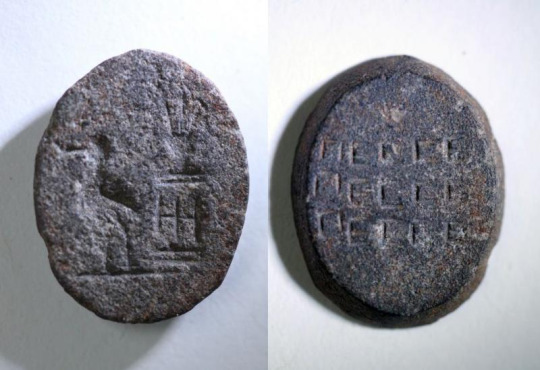

Although most of these magic gemstones were used as jewelry, it is possible that they also had other uses, as part of a ritual to heal a patient or as a physical component for an incantation, such as those with depictions of Harpocrates seated on a lotus the nomina magica Bainchōōōch (Bainchōōōch, Ba of the Shadow, isn't only a vox magica/nomina magica but a God on their own right. PGM aside, Bainchōōōch appears in Pistis Sophia as a triple powered deity that descends onto Jesus, giving him his powers)

An interesting fact is that of the production of magical gemstones during the 17th and 18th centuries of our era. Although the production of these gems continued during the Middle Ages and the Renaissance —irregularly, of course— they reflected the magical and religious reflected the magical and religious practices of their historical context.
This, however, was not the case during the 17th and 18th centuries, where magical gemstones of great quality and sophistication were produced, which not only reproduced the iconographic motifs and logoi of the pre-existing graeco-egyptian magic gemstones, but also introduced new ones. An example of these gems are those with representations of Christ-Osiris or Jesus-Khepri
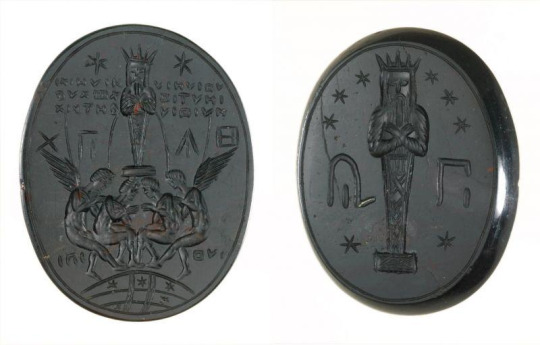
Sources:
Nagy, M. A., (2015) Engineering Ancient Amulets: Magical Gems of the Roman Imperial Period. in D. Boschung and J. Bremmer (eds), The Materiality of Magic (Morphomata 20). Paderborn, 205-240.
Faraone, C. (2018) The Transformation of Greek Amulets in Roman Imperial Times, Filadelfia; University of Pennsylvania Press.
Simone, M., (2005) (Re)Interpreting Magical Gems, Ancient and Modern en Shaked, S., Officina Magica: Essays on the Practice of Magic in Antiquity (IJS Studies in Judaica, vol. 4), Leiden; Brill, 141-170.
Campbell-Bonner Magical Gems Database (http://cbd.mfab.hu)
#magical gemstones#gemstones#PGM#Set#Sutekh#Set-Typhon#Sēt-Typhon#magic#religious syncretism#polytheism#egyptian polytheism#hellenic polytheism#kemetic polytheism#greek magical papyri#Bainchoooch#Thoth#talismans#amulets#talismanic magic
52 notes
·
View notes
Text
Crowley as Samael
First, Samael is not Lucifer.

Crowley's tattoo (∞) resembles the deity found on a Gnostic gem, which is said to be associated with the Archangel/Fallen Angel Samael. Samael appears in the story of the Garden of Eden and is also depicted as riding a snake. He is "not necessarily evil, since his functions are also regarded as resulting in good..."


Here is another depiction of Samael, in his role as Death, as illustrated by Gustave Doré. This artwork is one of his illustrations for Poe's gothic nightingale 'The Raven,' created in 1883.

Numerous Gnostic works refer to Samael as 'The Blind God,' so Crowley's sunglasses could be a fitting touch.

"As guardian angel and prince of Rome, he is the archenemy of Israel. By the beginning of Jewish culture in Europe, Samael had been established as a representative of Christianity, due to his identification with Rome." Character traits get mixed up a bit here but we see both in Rome.


"Samael's appearance is that of a lion-faced serpent. Although the Gnostics and Jewish originally used the same source, both depictions of Samael developed independently". Crowley's table and his chair, both decorated with serpents and lion heads. Second one is from the Dirty Donkey pub in S2.

Given that Samael is the king of all demons, we will likely see Crowley as the new Grand Duke of Hell in S3.
16 notes
·
View notes
Text
bloodstone

I wasn't aware before I started poking around but apparently March babies have one of the most METAL birthstones I've ever heard of.
There's the more standard birthstone which is the Aquamarine.
And then there's the Bloodstone.
Because March doesn't do anything by halves.
Bloodstones are officially called heliotrope, a word that comes form ancient Greek meaning 'to turn the sun'. In fact, in ancient times, there was a belief that submerging a bloodstone in water would actually turn the sun red in response. Or perhaps that it just turned the stone blood red, like the sun, when those rays reflected off of it. Bloodstones are a type of cryptocrystalline quartz, which means that the quartz crystals that make up the stone are so small that even with a microscope they're hard to see. As such, bloodstones can be either opaque or transparent. The most popular form however is a dark green stone with red specks throughout. The red is hermatite which is an iron oxide compound.
Remember that.
Back to the story - obviously with a name like that and a long history of being around, the bloodstone is going to have some superstitions that go with it. Let's dive in.
The bloodstone has been used both to carve seals on and as amulets from ancient times. The red of it was said to represent blood and thus it was considered good for health and strength, making it a favorite with athletes and soldiers. It was also supposed to help with blood issues. For instance the Romans believed that pressing a cold bloodstone to a wound would help staunch the bleeding. Remember the iron oxide in bloodstones - well, it turns out the Romans weren't entirely wrong. Iron oxide is an astringent. This same belief is found in India as well. Pliny the Elder wrote that magicians used the stone to turn themselves invisible. Ancient Greeks and then Romans believed that wearing the stone would make people more likely to grant you favors and it was said to open doors for its wearer. The Assyrians and Babylonians used bloodstones to make their signet rings and seals. During the Middle Ages, Albertus Magnus, also known as St. Albert the Great, and well known for his studies of Aristotle, even called the gem 'the stone of Babylon' in his writings and said it was known to have several magical properties from Antiquities. The prominent belief in the Middle Ages however, was that the drops of red were the blood of Christ, falling from him while he hung on the cross to stain the stone underneath. Because of this it is sometimes called Christ's Stone or the Martyr's Stone. The Gales in Scotland believed the red drops were also blood that had fallen on the stones but they believed the blood came from the 'Nimble Ones', giants that fought across the sky at night.
Associated with March, and the god of war that the month is named after, the bloodstone is thought to bestow vitality and bravery. It is also said to promote good health and longevity as well as good fortune and wealth. Anyone with legal matters going on should wear one to bring favor to their cause, prevent deception and bring them victory. Bloodstones are supposed to allow their wearer to summon storms or grant them protection from lightning. They can supposedly be used as an antivenom to snake bites as well as to cure tumors. The Gnostics believed the gem could strengthen the stomach and alleviate melancholy and the Middle Ages believed it could help with animal husbandry.
And lastly, in modern times, in some Asian countries like India, its believed that swallowing the ground up stone will help with blood circulation, hence making it a powerful aphrodisiac for its ability to increase blood flow. Because of this, jewelers say it is hard to find high quality stones on the market these days.
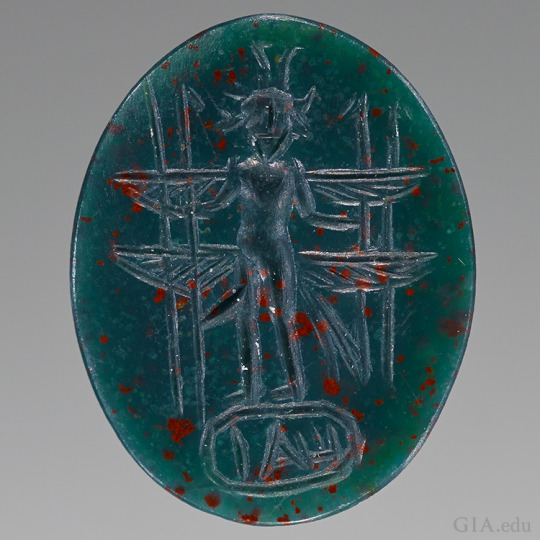
5 notes
·
View notes
Text
And he said unto me, It is done, I am Alpha and Omega, the beginning and the end: I will give to him that is athirst, of the well of the water of life freely.
Revelation 21:6 1599 Geneva Bible
3 notes
·
View notes
Text
Rotes as Revision: Byzantine Kingship Rituals
So I am very TTRPG-brained and have a bad habit of letting it distract me from uni-work - as in "ah, the essay's due in tomorrow, I have time to make a 60x60 hexmap and populate it with encounters!" However, I'm also very 'tism-brained and so if I don't think about my beloved special interest I will simply Cease Being Productive Entirely.
A way I have recently been testing of getting around this is making TTRPG content based on whatever I'm studying at the time! One significant example, a mage game set in Northern Ireland about a plot by gnostic paramilitaries to create a new Celtic realm by utilizing the awakened spirit of a long-dead Pharoah, is a WIP at the moment, but whilst I put down my dissertation on Loyalist groups in the Troubles to focus on some essays about the Late Antique middle east for a bit, I thought I'd knock out something quick for that.
I therefore present: a Mage rote inspired by the artistic and cultural displays of dominion made use of by Eastern Roman and Sasanian emperors in their interactions with each other, though definitely applicable to circumstances outside of that! This is all heavily inspired by Matthew P. Canepa's The Two Eyes of the Earth: Art and Ritual Kingship between Rome and Sasanian Iran, an excellent book you should read if you're remotely interested in the pre-Islamic Middle East, early Iranian or early Byzantine history from either a political or cultural perspective. There are two more I have ideas for (Ritual Humiliation [Entropy 5, with optional Prime 4/Time 4] and Prestige-Garnering Warfare [Prime 3 with optional Mind 2]), but also this post has been sitting in my drafts for three weeks with only the first written so I may never get to them. Alas, the fickle butterfly of inspiration settles but briefly!
Paradigms:
Iconographic Authority (Mind 5 [crude form] or Prime 4/Mind 2+ and 10+ points of Quintessence [standard form])
The representation of the ruler, given as a gift, seems to take on the aspect and dignity of the ruler themself, carrying the sense of their presence far beyond them. Though this might conjure images of paranoia-wracked cults of personality to some, its effects can also be highly desirable - for example, the sense that a neighbouring ruler is literally present in one's court projects an image of one's power and of mutual respect without the expense or stress of continuous visits.
Common Practices: Art of Desire, Craftwork, Dominion*, Faith*, Reality Hacking
Common Instruments: As part of the crafting process: Artwork*, Management and HR*; As the object itself: Artwork*, Books and Periodicals, Cups and Vessels*, Gems and Stones, Money and Wealth, Sacred Iconography, Symbols*, Weapons; As part of the gifting ceremony: Blessings and curses*, Dances and movement, Drugs and poisons, Eye contact, Fashion*, Food and drink*, Group rites*, Money and wealth*, Music*, Offerings and sacrifices, Prayers and invocations*, Sacred iconography, Social domination*, True names (titles)*, Voice and vocalizations*
* appropriate for the inspiring period of Byzantine-Sasanian interactions
The mage themselves or, more likely, some of their servants craft an item representing them - usually but not necessarily a literal depiction (if it is more abstract then the difficulty should increase by +1 to +3 depending on how directly and specifically the symbols used refer to the Mage). It is then handed over in a special ceremony to another individual, as part of which they are likely showered with other gifts and luxuries. This ceremony will usually be protracted, allowing for ritual casting, though of course extremely long castings risk wearing the target's patience thin.
For the crude form, four+ successes are required, with additional successes being used to extend duration (which means that in reality, 8 are probably the minimum to make the rote useful - see the Duration chart in the M20 core book). For the duration, the target's subconscious mind is altered so that they constantly feel as though the giver of the gift is physically present with them and behave appropriately - for example, avoiding acting against them in any way that would be obvious to somebody stood in the room alongside them.
In the standard form, the item is instead a Wonder - see the rules for crafting wonders - with Arete 2 (or more if more Quintessence is invested during crafting), imbued with a Mind 2 effect which it uses on every creature that observes it, beginning with the creature gifted it. This effect projects the mental impression of the presence of the giver quite directly - it is, for targets, as if the item were literally the giver. It will first roll arete after a minute of observation, then ten minutes, then once per hour a target is in its presence, beginning by accumulating nine successes against the target (at which point its effect on them is indefinite and automatic, taking effect whenever they are in its presence until the Wonder is destroyed) and then targeting other creatures, giving one creature the impression for one scene per three successes. It does not suffer the penalty for juggling multiple effects, being very specifically designed to do so.
The effect (and the effect of the Wonder in the standard case) is only vulgar in regions without a tradition of representative artwork, or at least without one of ruler-representation as a means of projecting authority. Both forms are somewhat difficult to detect as being alien impositions rather than natural reactions, requiring at least Mind 2 or (in the standard case) a Prime-based examination of the object itself.
2 notes
·
View notes
Text
ok ok ok
it seems likely to me that venti will be instrumental (pun intended) in taking celestia down. i've already posted about his connection to istaroth, who was one of the shining shades of phanes- teyvat's original god- and how i'm pretty sure the little gem around his neck is a seed like the one she gave to makoto and ei.
and i go insane every time i think about the wings of shimmering galaxy, in which venti says that "someone must heal the hurts of the world, and thus someone needed to find a way to communicate with them" and "If the sky, the stones, the sea and the stars would reply, then music might flow through all things." and that when he sang to the stars he didn't expect a reply, but then the glider came, which he gives to the traveler because they ALSO came from the stars. plus his statue of the seven line about waiting for a hero.
basically, venti has a ton of irons in the fire and he does NOT like celestia and wants to see teyvat returned to phanes
celestia's whole deal is fate and destiny. as such, the unknown god probably had plans for who should become the archons and serve her. my guess is that she originally planned for decarabian to become the anemo archon and, if for some reason that failed, it would probably fall to andrius. venti interfering and becoming an archon is not something i can see "fate" planning for. iirc, ei even mentions freedom from the heavenly principles during her story quest! which is so much! freedom seems so at odds with fate, which is an all-controlling force.
venti "accidental archon" barbatos. it makes too much sense. from what we heard about decarabian, he seems a lot more similar to other archons, if more cruel and short-sighted. that also fits with how archons behave in gnosticism, actually. meanwhile venti sacrifices any power he could have to just let humans do their own thing. his lack of power doesn't make him a useful servant to celestia, neither does his love of freedom
#lorepost#alissa u started this u made me think about it#i forget if i posted my actual 'venti being an archon was an accident' theory but i have now#imagine how different genshin would be if decarabian was archon#i mean venti wouldn't have sang to the stars and then probably the traveler wouldn't have ever come to teyvat
48 notes
·
View notes
Text
God of the Gnomes?
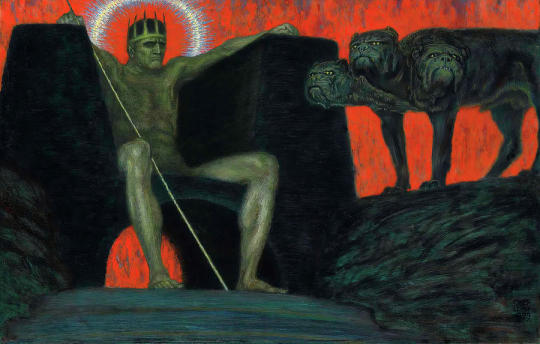
[Above: Franz von Stuck , Pluto, 1909]
If one were to link the gnomes' existence to a deity (not necessarily advisable, but consider it a thought experiment) who would one pick? I've spoken of gnomes' relation to gnosticism before, so we could consider the Demiurge as something of a patron of gnomeic existence. Then there are woodland fellows like Pan or Sylvanus who one could link to gnomes through superficiality at the very least.
But what about our old friend Pluto? I think there is a case to be made.
Gnomes (in my own view) are spirits of the earth. They are drawn to the woods and the wilderness due to circumstances surrounding the very nature of their existence, but the earth goes deeper than lush green forests. It is the underground, the deep, dark places of the world as much as the green surface.
Gnomes are as much creatures of the shaded and hallowed depths as they are of the wild woods and flowered fields. And who is the lord of the underworld? Pluto, known to many as Hades.
There are many underworld gods across many mythologies, but I find the link between Gnomes and Pluto specifically to be a strong one.
Pluto, as mentioned, is lord of the Underworld. Most consider this to mean dominion over death and this is true, but it comes also with dominion over all that is beneath the Earth. The rock and stone, the metals and gems, the caverns and shadows and so on. All things which contribute to the earthen spirit of the gnomes, who are no strangers to spelunking or mining.
Pluto's wider family tie to the gnomes is strengthened by his marriage to Properpina/Persephone and her mother Ceres/Demeter, both of whom govern spheres of influences closely tied to gnomish traits, such as the green side of the earth, agriculture, the cultivation of nature and so on.
Finally, there is the personality link. An interesting one, to be sure, and one which many might initially disregard. Gnomes tend to be jolly little fellows, after all, whilst Pluto is famously dour and grim. Beneath these traits, however, lie a bedrock of commonality. This bedrock is the labours of the gnomes and of Pluto. Pluto is mindful of his tasks, diligent in his service to the dead, a constant and demanding duty. Gnomes, similarly, are highly industrious and do not shirk from responsibility. There is a strong joie de vivre within their nature but to phrase it simply, they work hard and they play hard. And as I have mentioned, at the very core of a gnome is respect, a trait which Pluto values most highly.
Thus, it is with Pluto that I associate gnomes.
Do the gnomes need a god? No. They're spirits in their own right, possibly tiny pieces of a whole which in and of itself might be a powerful, natural, worldly consciousness attempting to experience itself. Even if they did have a god, I think their idea of worship would be far from our own human ideas of religion.
But if we are interested in relations between supernatural entities and theories of the pan-paranormal, then considering links between various entities can prove fruitful.
As always, I welcome thoughts, opinions, questions and corrections. We learn together or we don't learn.
#gnomes#gnomology#gnome posting#gnomeposting#the bright green#Pluto#Hades#Pan#Sylvanus#Demiurge#Gnosticism#Prosperpina#Ceres#Persephone#Demeter#Gods#Deities#paranormal#supernatural
4 notes
·
View notes
Text
Devil
A devil is the personification of evil as it is conceived in various cultures and religious traditions. It is seen as the objectification of a hostile and destructive force.
It is difficult to specify a particular definition of any complexity that will cover all of the traditions, beyond that it is a manifestation of evil. It is meaningful to consider the devil through the lens of each of the cultures and religions that have the devil as part of their mythos.
In Christianity, evil is incarnate in the devil or Satan, a fallen angel who is the primary opponent of God. Some Christians also considered the Roman and Greek deities as devils.
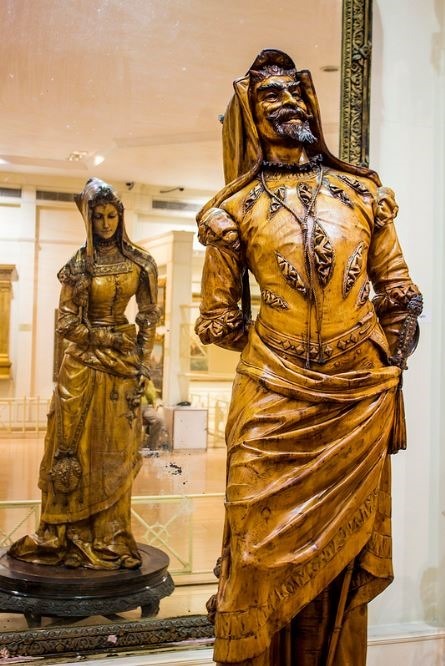
Christianity describes Satan as a fallen angel who terrorizes the world through evil, is the antithesis of truth, and shall be condemned, together with the fallen angels who follow him, to eternal fire at the Last Judgment.
In mainstream Christianity, the devil is usually referred to as Satan. This is because Christian beliefs in Satan are inspired directly by the dominant view of Second Temple Judaism (recorded in the Enochian books), as expressed/practiced by Jesus, and with some minor variations. Some modern Christians consider the devil to be an angel who, along with one-third of the angelic host (the demons), rebelled against God and has consequently been condemned to the Lake of Fire. He is described as hating all humanity (or more accurately creation), opposing God, spreading lies and wreaking havoc on their souls.
Horns of a goat and a ram, goat's fur and ears, nose and canines of a pig; a typical depiction of the devil in Christian art. The goat, ram and pig are consistently associated with the devil. Detail of a 16th-century painting by Jacob de Backer in the National Museum in Warsaw.
Satan is traditionally identified as the serpent who convinced Eve to eat the forbidden fruit; thus, Satan has often been depicted as a serpent.
In the Bible, the devil is identified with "the dragon" and "the old serpent" seen in the Book of Revelation, as has "the prince of this world" in the Gospel of John; and "the spirit that now worketh in the children of disobedience" in the Epistle to the Ephesians; and "the god of this world" in 2 Corinthians 4:4. He is also identified as the dragon in the Book of Revelation and the tempter of the Gospels.
The devil is sometimes called Lucifer, particularly when describing him as an angel before his fall, although the use of Lucifer (Latin lúcifer, "bringer of light"), the "son of the dawn", in Isaiah 14:12 is a reference to a Babylonian king.
Beelzebub is originally the name of a Philistine god (more specifically a certain type of Baal, from Ba‘al Zebûb, lit. "Lord of Flies") but is also used in the New Testament as a synonym for the devil. A corrupted version, "Belzeboub", appears in The Divine Comedy (Inferno XXXIV).
In other, non-mainstream, Christian beliefs (e.g. the beliefs of the Christadelphians) the word "satan" in the Bible is not regarded as referring to a supernatural, personal being but to any 'adversary' and figuratively refers to human sin and temptation.
In the Book of Wisdom, the devil is represented as the one who brought death into the world. The Second Book of Enoch contains references to a Watcher called Satanael, describing him as the prince of the Grigori who was cast out of heaven and an evil spirit who knew the difference between what was "righteous" and "sinful".
In the Book of Jubilees, Satan rules over a host of angels. Mastema, who induced God to test Abraham through the sacrifice of Isaac, is identical with Satan in both name and nature. The Book of Enoch contains references to Sathariel, thought also to be Sataniel and Satan'el. The similar spellings mirror that of his angelic brethren Michael, Raphael, Uriel and Gabriel, previous to his expulsion from Heaven.
A lion-faced deity found on a Gnostic gem in Bernard de Montfaucon's L'antiquité expliquée et représentée en figures may be a depiction of the Demiurge.
Gnostic and Gnostic-influenced religions postulate the idea that the material world is inherently evil. The One true God is remote, beyond the material universe, therefore this universe must be governed by an inferior imposter deity. This deity was identified with the deity of the Old Testament by some sects, such as the Sethians and the Marcions. Tertullian accuses Marcion of Sinope, that he
[held that] the Old Testament was a scandal to the faithful … and … accounted for it by postulating [that Jehovah was] a secondary deity, a demiurgus, who was god, in a sense, but not the supreme God; he was just, rigidly just, he had his good qualities, but he was not the good god, who was Father of Our Lord Jesus Christ.
John Arendzen (1909) in the Catholic Encyclopedia (1913) mentions that Eusebius accused Apelles, the 2nd-century AD Gnostic, of considering the Inspirer of Old Testament prophecies to be not a god, but an evil angel. These writings commonly refer to the Creator of the material world as "a demiurgus" to distinguish him from the One true God. Some texts, such as the Apocryphon of John and On the Origin of the World, not only demonized the Creator God but also called him by the name of the devil in some Jewish writings, Samael.
In the 12th century in Europe the Cathars, who were rooted in Gnosticism, dealt with the problem of evil, and developed ideas of dualism and demonology. The Cathars were seen as a serious potential challenge to the Catholic church of the time. The Cathars split into two camps. The first is absolute dualism, which held that evil was completely separate from the good God, and that God and the devil each had power. The second camp is mitigated dualism, which considers Lucifer to be a son of God, and a brother to Christ. To explain this they used the parable of the prodigal son, with Christ as the good son, and Lucifer as the son that strayed into evilness. The Catholic Church responded to dualism in AD 1215 in the Fourth Lateran Council, saying that God created everything from nothing, and the devil was good when he was created, but he made himself bad by his own free will. In the Gospel of the Secret Supper, Lucifer, just as in prior Gnostic systems, appears as a demiurge, who created the material world.
The earliest Hindu texts do not offer further explanations for evil, regarding evil as something natural. However, later texts offer various explanations for evil. According to an explanation given by the Brahmins, both demons and gods spoke truth and untruth, but the demons relinquished the truth and the gods relinquished the untruth. But both spirits are regarded as different aspects of one supreme god. Even some fierce deities like Kali are not thought of as devils but just as darker aspects of this god and may even manifest benevolence.
In Islam, the principle of evil is expressed by two terms referring to the same entity: Shaitan (meaning astray, distant or devil) and Iblis. Iblis is the proper name of the devil representing the characteristics of evil. Iblis is mentioned in the Quranic narrative about the creation of humanity. When God created Adam, he ordered the angels to prostrate themselves before him. All did, but Iblis refused and claimed to be superior to Adam out of pride. [Quran 7:12] Therefore, pride but also envy became a sign of "unbelief" in Islam. Thereafter Iblis was condemned to Hell, but God granted him a request to lead humanity astray, knowing the righteous will resist Iblis' attempts to misguide them. In Islam, both good and evil are ultimately created by God. But since God's will is good, the evil in the world must be part of God's plan. Actually, God allowed the devil to seduce humanity. Evil and suffering are regarded as a test or a chance to proof confidence in God. Some philosophers and mystics emphasized Iblis himself as a role model of confidence in God, because God ordered the angels to prostrate themselves, Iblis was forced to choose between God's command and God's will (not to praise someone else than God). He successfully passed the test, yet his disobedience caused his punishment and therefore suffering. However, he stays patient and is rewarded in the end.
Muslims hold that the pre-Islamic jinn, tutelary deities, became subject under Islam to the judgment of God, and that those who did not submit to the law of God are devils.
Although Iblis is often compared to the devil in Christian theology, Islam rejects the idea that Satan is an opponent of God and the implied struggle between God and the devil. Iblis might either be regarded as the most monotheistic or the greatest sinner, but remains only a creature of God. Iblis did not become an unbeliever due to his disobedience, but because of attributing injustice to God; that is, by asserting that the command to prostrate himself before Adam was inappropriate. There is no sign of angelic revolt in the Quran and no mention of Iblis trying to take God's throne and Iblis's sin could be forgiven at anytime by God. According to the Quran, Iblis's disobedience was due to his disdain for humanity, a narrative already occurring in early apocrypha.
As in Christianity, Iblis was once a pious creature of God but later cast out of Heaven due to his pride. However, to maintain God's absolute sovereignty, Islam matches the line taken by Irenaeus instead of the later Christian consensus that the devil did not rebel against God but against humanity. Further, although Iblis is generally regarded as a real bodily entity, he plays a less significant role as the personification of evil than in Christianity. Iblis is merely a tempter, notable for inciting humans into sin by whispering into humans minds (waswās), akin to the Jewish idea of the devil as yetzer hara.
On the other hand, Shaitan refers unilaterally to forces of evil, including the devil Iblis, then he causes mischief. Shaitan is also linked to humans psychological nature, appearing in dreams, causing anger or interrupting the mental preparation for prayer. Furthermore, the term Shaitan also refers to beings, who follow the evil suggestions of Iblis. Furthermore, the principle of Shaitan is in many ways a symbol of spiritual impurity, representing humans' own deficits, in contrast to a "true Muslim", who is free from anger, lust and other devilish desires.
In Sufism and mysticism
In contrast to Occidental philosophy, the Sufi idea of seeing "Many as One", and considering the creation in its essence as the Absolute, leads to the idea of the dissolution of any dualism between the ego substance and the "external" substantial objects. The rebellion against God, mentioned in the Quran, takes place on the level of the psyche, that must be trained and disciplined for its union with the spirit that is pure. Since psyche drives the body, flesh is not the obstacle to humans but rather an unawareness that allows the impulsive forces to cause rebellion against God on the level of the psyche. Yet it is not a dualism between body, psyche and spirit, since the spirit embraces both psyche and corporeal aspects of humanity. Since the world is held to be the mirror in which God's attributes are reflected, participation in worldly affairs is not necessarily seen as opposed to God. The devil activates the selfish desires of the psyche, leading the human astray from the Divine. Thus it is the I that is regarded as evil, and both Iblis and Pharao are present as symbols for uttering "I" in ones own behavior. Therefore it is recommended to use the term I as little as possible. It is only God who has the right to say "I", since it is only God who is self-subsistent. Uttering "I" is therefore a way to compare oneself to God, regarded as shirk.
In Salafism
Salafi strands of Islam commonly emphasize a dualistic worldview between the believers and the unbelievers, with the devil as the enemy of God's path. Even though the devil will be finally defeated by God, he is a serious and dangerous opponent of humans. While in classical hadiths, the demons (Shayateen) and the jinn are responsible for impurity and possibly endanger people, in Salafi thought, it is the devil himself, who lurks on the believers, always striving to lead them astray from God. The devil is regarded as an omnipresent entity, permanently inciting humans into sin, but can be pushed away by remembering the name God. The devil is regarded as an external entity, threatening the everyday life of the believer, even in social aspects of life. Thus for example, it is the devil who is responsible for Western emancipation.
Judaism
Yahweh, the god in pre-exilic Judaism, created both good and evil, as stated in Isaiah 45:7: "I form the light, and create darkness: I make peace, and create evil: I the Lord do all these things." The devil does not exist in Jewish scriptures. However, the influence of Zoroastrianism during the Achaemenid Empire introduced evil as a separate principle into the Jewish belief system, which gradually externalized the opposition until the Hebrew term satan developed into a specific type of supernatural entity, changing the monistic view of Judaism into a dualistic one. Later, Rabbinic Judaism rejected the Enochian books (written during the Second Temple period under Persian influence), which depicted the devil as an independent force of evil besides God. After the apocalyptic period, references to Satan in the Tanakh are thought to be allegorical.
Mandaeism
In Mandaean mythology, Ruha fell apart from the World of Light and became the queen of the World of Darkness, also referred to as Sheol. She is considered evil and a liar, sorcerer and seductress. : 541 She gives birth to Ur, also referred to as Leviathan. He is portrayed as a large, ferocious dragon or snake and is considered the king of the World of Darkness. Together they rule the underworld and create the seven planets and twelve zodiac constellations. Also found in the underworld is Krun who is the greatest of the five Mandaean Lords of the underworld. He dwells in the lowest depths of creation and his epithet is the 'mountain of flesh'. : 251 Prominent infernal beings found in the World of Darkness include lilith, nalai (vampire), niuli (hobgoblin), latabi (devil), gadalta (ghost), satani (Satan) and various other demons and evil spirits.
Manichaeism
In Manichaeism, God and the devil are two unrelated principles. God created good and inhabits the realm of light, while the devil (also called the prince of darkness ) created evil and inhabits the kingdom of darkness. The contemporary world came into existence, when the kingdom of darkness assaulted the kingdom of light and mingled with the spiritual world. At the end, the devil and his followers will be sealed forever and the kingdom of light and the kingdom of darkness will continue to co-exist eternally, never to commingle again.
Hegemonius (4th century AD) accuses that the Persian prophet Mani, founder of the Manichaean sect in the 3rd century AD, identified Jehovah as "the devil god which created the world" and said that "he who spoke with Moses, the Jews, and the priests … is the [Prince] of Darkness, … not the god of truth."
Tengrism
Among the Tengristic myths of central Asia, Erlik refers to a devil-like figure as the ruler of Hell, who is also the first human. According to one narrative, Erlik and God swam together over the primordial waters. When God was about to create the Earth, he send Erlik to dive into the waters and collect some mud. Erlik hid some inside his mouth to later create his own world. But when God commanded the Earth to expand, Erlik got troubled by the mud in his mouth. God aided Erlik to spit it out. The mud carried by Erlik gave place to the unpleasant areas of the world. Because of his sin, he was assigned to evil. In another variant, the creator-god is identified with Ulgen. Again, Erlik appears to be the first human. He desired to create a human just as Ulgen did, thereupon Ulgen reacted by punishing Erlik, casting him into the Underworld where he becomes its ruler.
According to Tengrism, there is no death, meaning that, when life comes to an end, it is merely a transition into the invisible world. As the ruler of Hell, Erlik enslaves the souls, who are damned to Hell. Further, he lurks on the souls of those humans living on Earth by causing death, disease and illnesses. At the time of birth, Erlik sends a Kormos to seize the soul of the newborn, following him for the rest of his life in an attempt to seize his soul by hampering, misguiding and injuring him. When Erlik succeeds in destroying a human's body, the Kormos sent by Erlik will try take him down into the Underworld. However a good soul will be brought to Paradise by a Yayutshi sent by Ulgen. Some shamans also made sacrifices to Erlik, for gaining a higher rank in the Underworld, if they should be damned to Hell.
Yazidism
According to Yazidism there is no entity that represents evil in opposition to God; such dualism is rejected by Yazidis, and evil is regarded as nonexistent. Yazidis adhere to strict monism and are prohibited from uttering the word "devil" and from speaking of anything related to Hell.
Zoroastrianism
Zoroastrianism probably introduced the first idea of the devil; a principle of evil independently existing apart from God. In Zoroastrianism, good and evil derive from two ultimately opposed forces. The force of good is called Ahura Mazda and the "destructive spirit" in Avestan-language called Angra Mainyu. The Middle Persian equivalent is Ahriman. They are in eternal struggle and neither is all-powerful, especially Angra Mainyu is limited to space and time: in the end of time, he will be finally defeated. While Ahura Mazda creates what is good, Angra Mainyu is responsible for every evil and suffering in the world, such as toads and scorpions.
Devil in Moral Philosophy
Spinoza
A not published manuscript of Spinoza's Ethics contained a chapter (Chapter XXI) on the devil, where Spinoza examined whether the devil may exist or not. He defines the devil as an entity which is contrary to God.
" However, if the devil is the opposite of God, the devil would consist of Nothingness, which does not exist. Causes of anger, hate, envy, and all things the devil is blamed for, could be expained without the proposal of a devil."
Spinoza doesn't explain evil individuals as moral agents making evil choices, but as being affected by emotions comparable to a weakness or an illness.
In Religion Within the Limits of Reason Alone, Immanuel Kant uses the devil as the personification of maximum moral reprehensibility. Deviating from the common Christian idea, Kant does not locate the morally reprehensible in sensual urges. Since evil has to be intelligible, only when the sensual is consciously placed above the moral obligation something can be regarded as morally evil. Thus, to be evil, the devil must be able to comprehend moral but consciously reject it, and, as a spiritual being (Geistwesen), having no relation to any form of sensual pleasure.
It is necessarily required for the devil to be a spiritual being, because if the devil were also a sensual, it would be possible that the devil does evil to satisfy lower sensual desires, and doesn't act from the mind alone. The devil acts against morals, not to satisfy a sensual lust, but solely for the sake of evil. As such, the devil is unselfish, for he does not benefit from his evil deeds. However, Kant denies that a human being could ever be completely devilish. Kant admits that there are devilish vices (ingratitude, envy and malicious joy), i.e. vices that do not bring any personal advantage, but a person can never be completely a devil.
In his Lecture on Moral Philosophy (1774/75) Kant gives an example of a tulip seller who was in possession of a rare tulip, but when he learned that another seller had the same tulip, he bought it from him and then destroyed it instead to keeping it for himself. If he had acted according to his sensual in according to his urges, the seller would have kept the tulip for himself to make profit, but not have destroyed it. Nevertheless, the destruction of the tulip cannot be completely absolved from sensual impulses, since a sensual joy or relief still accompanies the destruction of the tulip and therefore cannot be thought of solely as a violation of morality.
4 notes
·
View notes
Text
Domino 3-false deity, true demiurge
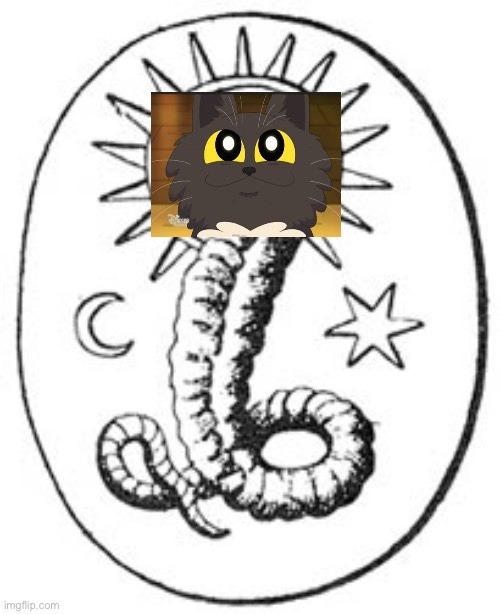
As part of the lost hum-anne-ity au, the gems have different origin. It’s revealed that the gaurdian did not actually create them, they merely adopted the stones iconography for their own. So this raises the question; if domino 3 isn’t God, what are they?
Domino 3 is essentially, the amphibia equivalent of the demiurge
The demiurge is a figure from Gnosticism. The official description is as follows:
a heavenly being, subordinate to the Supreme Being, that is considered to be the controller of the material world and antagonistic to all that is purely spiritual. is an artisan-like figure responsible for fashioning and maintaining the physical universe.
That description fits pretty well with the guardian, both in canon and in the au. While the three goddesses created the soul of amphibia, the deity was responsible for creating the physical forms for all of its inhabitants. And when the goddess ascended to be reincarnated, the guardian was charged with protecting amphibia and the multiverse (albeit it did a very poor job) and over time, believed itself to be the creator of the gems power, hence the “test” in the form of the golden fruit.(which I speculate was done out of boredom.)
The guardian always struck me as a very immoral character. Not evil, but selfish and alien in it’s thought process. Given how it brought back Anne solely to make her the new guardian, and only sent her back when it thought she would grow to be a better guardian. To me, domino 3 does not see things in terms of good or evil, but in terms of how efficiently it can do it’s job. It praises Anne for selflessly using the stones and believes that is what would make her a good successor, but dosent consider the work she needed to get there, or the toll such an endeavor took on her. In the au, it also considers evil actions done for a “selfless” goal to be acceptable.
More importantly, domino 3 serves as a foil to the core. Much like the demiurge, it opposes spiritual nature, which in this case is the ties Anne has to her loved ones and her own humanity. It seeks to uplift the physical(turning Anne into a god) at the expense of the spiritual(her humanity). This contrast with the core, who seeks to uplift the spiritual(seeking immortality and preserving their way of live) at the expense of the physical(their bodies and the land). And whilst the core is obsessed with maintaining the past and never changing, the deity wants to force change upon others to create their ideal future.
3 notes
·
View notes